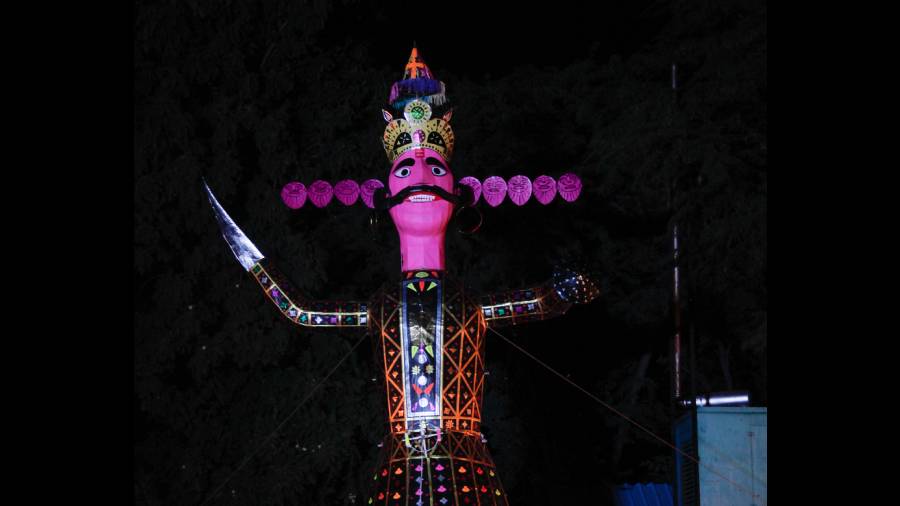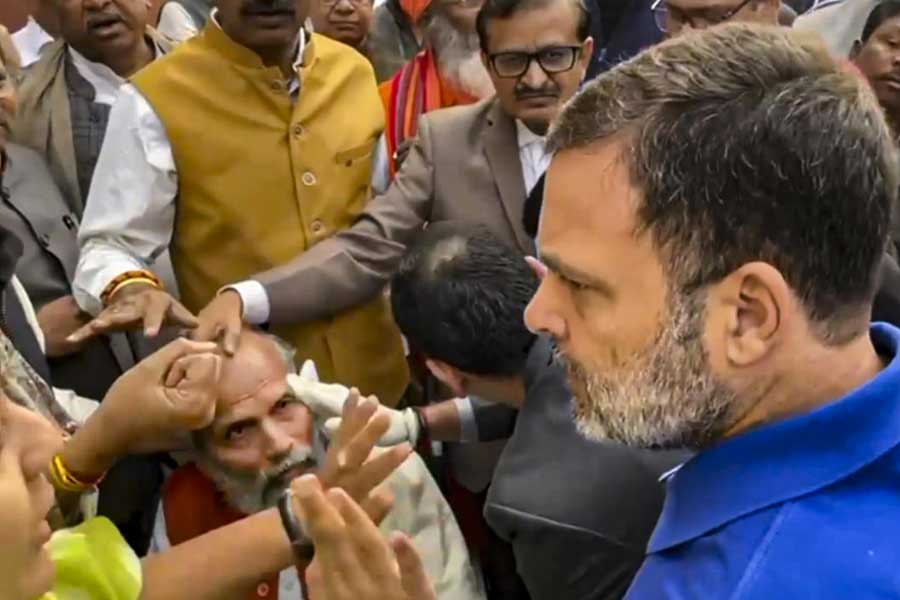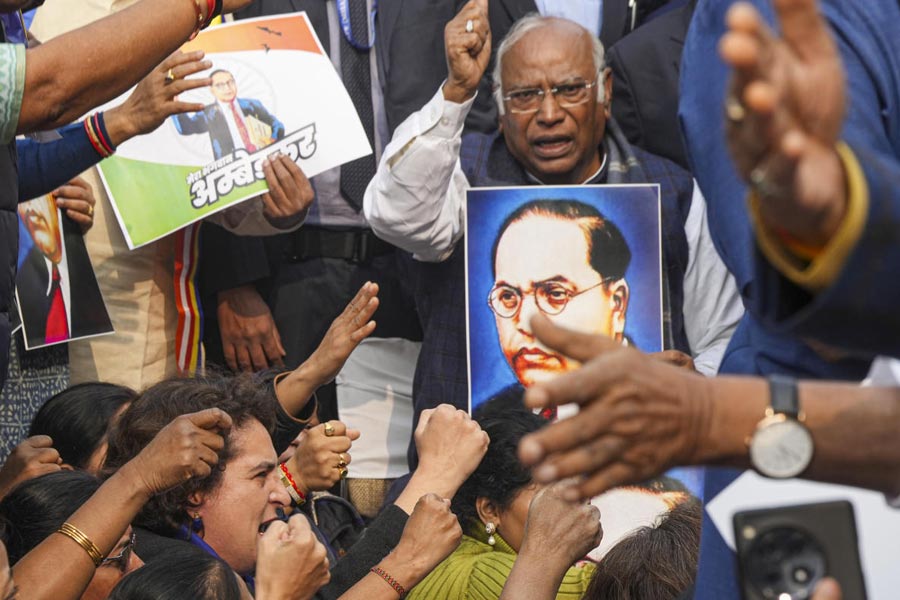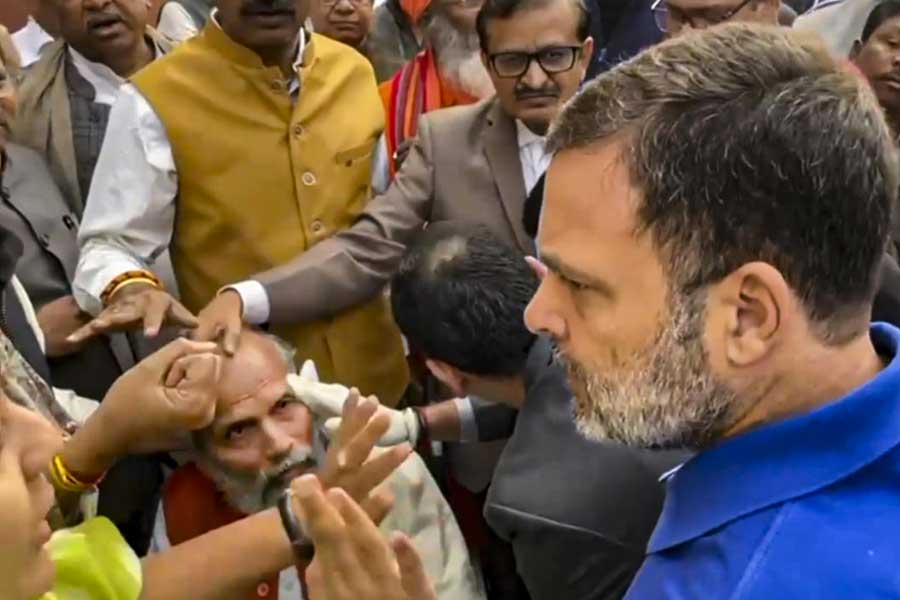Every October, thousands of story-mums stand on the fringes of Ram Leela. As Ravana becomes cinder and Sita buries herself alive, these relentless bards begin their tales of justice and redemption. There is a lot to rewrite. Some of us choose to salvage Ravana, demolish the binaries of good and evil. Some just prefer to stay with Sita and tell the story of a world that could have been. We spin our yarn to remind our children caught in a vortex of Ramayana-themed craft class, school plays, circle time sermons, that truth is fluid and a story must always be re-told if it is to remain meaningful.
To escape the festive gore and because we live in Delhi where Durga Puja is but a pirated version of the original, we spend Dussehra on the banks of Kosi River, tucked away in the curated wild of Jim Corbett National Park. Even though the forest is smack-next to a state where hate and bigotry are the norm, we hope the wild will insulate us. Our feet dipped in rapids and swells, we sing our favourite Shah Rukh songs, recite apologies and send missives to the tiger and elephant — ‘Would you care for a chat or a quick eye-to-eye? Come on, be a sport. We can offer a poem or a song if you like’. Eyes blazing, they watch us as evening falls. In return for our enthusiasm, they turn up the silence and send us a cryptic message conveyed through goosebumps and spine chills. Take back your city smells, your tame fires, your tremendous sounds. We will never be friends. Gathering those gigantic blank spaces which we name the Tiger of Dhikala, Elephant Hur, Corbett’s Redemption, we walk back towards habitation.
In October, as we soon learn, there is no escape from Lanka-kand. Few miles down the riverbank, a roar away from the thick evergreen forest where tigers roam, we stumble upon Ravana’s effigy, clad in black and red silk, painted heads lopsided yet grand. Children and parents, the old bent-over sticks, the young in full frolic, an enormous number considering we are in a forest, gather around with cries of Jai Sri Ram and jeer at Ravana, Season 2021, looking devilishly handsome, bearing a strong resembling to SRK. He is burnt with vengeance. No flame arrow. No Baazigar-ish dying. Just violent thursts with torches fashioned out of Rohini and teak branches. Soon the crowds disperse and go back to their karaoke night and selfie-fest. They don’t stay to watch the many heads of the effigy explode.
The word effigy is a near cousin of fiction, both derived from the Latin verb fingere, which means to fabricate, form or shape. It is no small irony that an effigy, the prototype of a hate figure, lives on the basis of fiction or versions of the truth. Witnessing Ravana’s ignominy, I and my friend, both of us story-mums, scramble to spin our yarn and show our little brood of seven- and
11-year-olds that there are many other versions of Dussehra, the untold stories, the path not taken, the other points of view.
To be a mother is to perish as an intellectual and political being, or so goes the slander. Thankfully, quite the opposite is true. Never was a human condition more political than the becoming of and being a mother. The quest for a just world colours every one of our parenting action — from running the tap while toothbrushing, to invoking of the tooth fairy, choosing ballet over Kathak over Bharatnatyam to re-texting the rhymes — each and every act presents us with an opportunity to question and re-balance. Come October, the month of epics, with ‘us and them’ on full display, story-mums work overtime. To do their part, they pick up arguments, send long emails on school ERP (Enterprise Resource Planning system) about the perils of telling one version of the truth. On school WhatsApp groups, otherwise kept on mute for the rest of the year, story-mums become power users in October, invoking Mary Beard and Kaikeyi at 1am.
Through relentless stories and re-telling of epics and myths, a story-mum aspires to impart ideas of good, evil, justice and equality. The good news is that these other versions are quickly gaining currency. Nudged and shamed by story-mums, who are slowly becoming a sizeable market segment, multi-billion-dollar entertainment giants like Disney and Sony are reimagining their heroines. Every other year, a new Cinderella film is released, a cauldron of race, gender, language, all boundaries slipping and sliding into each other. They aim to please us, we are told. Come let us tell your stories, they say. But story-mums have made it clear they are not giving in to these cunning overtures. Not if you are going to make Sita sweat-shirts and sell them to H&M. If your Sita gets to rule Ayodha, then we talk. If not, we are happy with small performances and Ramayana in a solar punk world.
Ram is an idea; we will grant you that. But that idea is hegemonic and stands tall at the expense of other ideas and belief systems. He may be, as the Urdu poet Allama Iqbal once said, the Imam-e-Hind of ahle-nazar or the discerning. But the question of Sita is what keeps us awake at night. Perhaps Ram could do with a vacation and resurface as a supporting actor in a Disney musical. Story-mums, I am told, have set their sights on a glitzily produced Sitayana, an epic retold for the post-apocalyptic future, where we have reversed climate change, made peace with nature and abandoned binaries. Who would star in that, is a question, I ask the Tiger of Dhikala.

The author is a writer with a day job in global policy











